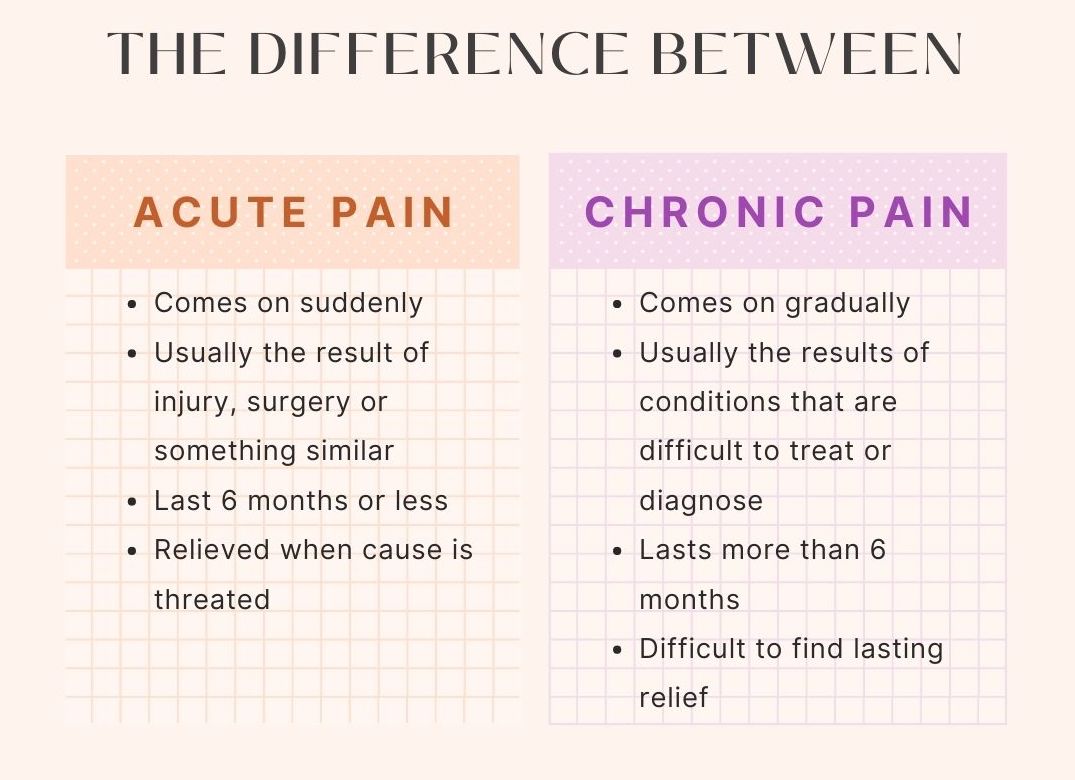what is pain | Types ,Cause, Treatment
What is Pain Cure ?
A headache, tight muscles, arthritis, or other aches and pains can all be treated with pain cure, often known as anti-inflammatory medications. There are many different medications available to treat pain, and each one has its own set of benefits and drawbacks. Specific medications are more effective at treating certain kinds of pain than they are with others. There is a possibility that each individual will react somewhat differently to a pain cure
Cause of pain cure:
Some nerves, called nociceptors, detect damage to tissues and send that information to the brain and spinal cord, causing a person to feel discomfort
When one's skin comes into contact with a hot surface, for instance, a reflex arc is triggered in the spinal cord, and one's muscles immediately contract.
This response happens before the brain receives the information. As soon as the pain signal is received, the unpleasant pain sensation is felt.
One's perception of pain depends on how well these signals are interpreted by the brain and how well nociceptors communicate with the brain.
Dopamine and other feel-good compounds may be released by the brain to counteract the unpleasant effects of pain cure.
Types And Treatment of pain cure:
Pain can be either acute or chronic
Acute pain:
This kind of pain is typically severe and transient. It is the body's method of warning a person of an injury or small-scale tissue damage. Acute pain normally goes away once the underlying damage has been treated.
Acute pain sets off the body's fight-or-flight reaction, which frequently causes higher breathing and pulse rates.
Different forms of acute pain exist, including:
Somatic pain: This type of pain is felt on the skin or in the soft tissues beneath the skin.
viscerl pain: It is Internal organs and the linings of bodily cavities
Referred pain: When tissue injury occurs other than where a person feels visceral discomfort. For instance, shoulder pain is a common symptom of a heart attack.
best medicine suggest for acute : Aspadol 200mg
Acute pain treatment:
Medication is commonly used for the treatment of acute pain.
This kind of discomfort usually has a medical cause, and if that cause is addressed, the pain might go away on its own. Take a sore throat as an example; if a bacterial infection is at blame, antibiotics will eliminate the infection and alleviate the pain.
Acetaminophen:
Acetaminophen is a drug uses to treatment the pain. Hundreds of pharmaceuticals, both OTC and prescribed, contain it as an active component.
Acetaminophen is a pain reliever and fever reducer commonly sold under the brand name Tylenol. When combined with other components, it's useful for relieving the signs of hay fever, the flu, and the common cold.
To alleviate moderate to severe pain, doctors frequently prescribe medications containing acetaminophen and other substances.
However, acetaminophen can cause severe liver damage if used in large enough quantities. No one should ever take more than is advised.
A class of medications known as nonsteroidal anti-inflammatory medicines (NSAIDs)
Nonsteroidal anti-inflammatory drugs (NSAIDs):
are yet another class of pain relievers. They assist alleviate suffering and facilitate a return to normal life.
Pain and inflammation can be reduced locally with the help of nonsteroidal anti-inflammatory drugs. There is a risk of bleeding as a gastrointestinal adverse effect of these medications. A high dosage will necessitate medical supervision.
Before taking an analgesic, one should always check the label to see if there is a maximum dosage and what ingredients it contains. No one should ever take more than is advised.
Opioids:
These medications are prescribed by doctors to treat severe, sudden aches caused by things like surgery, burns, cancer, and broken bones.
In cases of severe damage and , doctors will carefully regulate and deliver opioid dosage, diminishing the quantity gradually to reduce withdrawal symptoms.
Before making any decisions about medicine, patients should have a thorough discussion with their doctor, during which they should also reveal any and all health issues and medications they are currently taking. Opioids have the potential to drastically alter the course of various chronic diseases.
Top best medicine for pain cure suggestion asmanol 100mg (Tapentadol)
"Treat moderate to severe pain associated with acute and ongoing joint injuries and surgical operations" is the description given for the usage of asmanol 100mg.
Since it has the potential to become habit-forming, asmanol 100 mg should be used with care in those who have a history of substance misuse. While taking this medication, those who have head traumas, seizures, or respiratory depression should use care.
Monoamine oxidase inhibitors, antidepressants, and other opioids may interact negatively with asmanol. Patients should disclose to their doctor the full list of any current drugs they are taking before starting Asmanol 100 mg therapy.
Asmanol 100 does have adverse effects, and they do exist. The most often reported negative side effects were fatigue, nausea, constipation, dizziness, and headaches. These unfavourable drug effects are often mild, transient, and become better with time.
Chronic pain:
There is frequently no treatment for this kind of pain, which lasts far longer than acute pain. Mild or severe chronic pain are both possible. Additionally, it may be ongoing, as in the case of arthritis, or intermittent, as in the case of a migraine attack. On numerous occasions, intermittent discomfort arises but subsides in between flare-ups.
People with chronic pain gradually stop having fight-or-flight reactions when their sympathetic nervous system adjusts to the pain signal.
A accumulation of electrical signals in the central nervous system (CNS) that overstimulate the nerve fibres can happen if enough episodes of intense pain take place.
The term "windup" for this process likens the accumulation of electrical signals to a wind-up toy. A toy runs faster for longer when it is wound more vigorously. The same mechanism underlies chronic pain, which is why a person may continue to experience pain even after the initial incident.

Chronic pain cure treatment:
Pain can be reduced using a variety of non-pharmaceutical approaches. People with chronic pain may find that these non-pharmaceutical approaches are more helpful.
Among these treatments of pain cure:
By inserting extremely thin needles into particular pressure sites, acupuncture may alleviate pain.
These injections, known as "nerve blocks," might dull the pain in a specific region of the body by blocking the impulses from a cluster of nerves.
Psychotherapy:
Living with chronic pain can lessen your quality of life and make it challenging to do regular tasks. Also, has linked to sadness, and research suggests that despair can make existing discomfortfeel even worse. A psychotherapist can assist a patient in making lifestyle adjustments to lessen distress and develop coping mechanisms.
transcutaneous electrical nerve stimulation:
(TENS) is to relieve discomfort by activating the brain's opioid and pain gating systems.
Surgical procedures:
Operations on the spinal column, brain, or nerves are all viable options for dealing with persistent pa. Procedures such as rhizotomy, decompression, and deep brain and spinal cord electrical stimulation are examples.
Use of biofeedback:
a person can train their brain to have a more direct effect on bodily functions such as heart rate that are normally controlled by the body's nervous system.
relaxation therapy:
Is use to refer to a wide variety of practise, most commonly found in the field of complementary and alternative medicine, that aim to induce a state of deep relaxation in their patients. Hypnosis, yoga, meditation, massage therapy, diversion methods, tai chi, and so on can all help.
Back discomfort can occasionally alleviated with physical manipulation, such as that performed by a physiotherapist or chiropractor.
physical theory:
Exercises prescribed by a physiotherapist can improve mobility and, in some cases, alleviate chronic pain.
heat and cold:
In the form of hot and cold packs can be beneficial. People can choose amongst them and try different combinations based on the nature of their injuries and suffering. When applied to a sore spot, many over-the-counter creams and ointments can actually help bring some much-needed heat.
Injuries and overuse of bodily parts are common causes of discomfort, so getting some rest may help.
If you're able to get a handle on your discomfort, you can go about your normal routine, continue to interact with others, and have a full life.
Describing pain:
There are other, more specialized ways of describing pain.
These include:
Neuropathic pain: The damage or injury to the nerves that carry information from the skin, muscles, and other regions of the body to the brain and spinal cord is the root cause of neuropathy, also known as neuropathic pain. A burning sensation is the most common way in which the discomfort is described, and affected areas are frequently hypersensitive to the touch.
Best Medicine Suggest : Tapaday 200mg
Phantom pain: Phantom pain is when a person feels discomfort in an area of the body where a body part is missing. Oth issues that can arise when you lose a portion of your body include the following: Phantom sensations occur when an absent limb or extremity continues to be experienced as though it were an integral part of the body.
Central pain: Central pain: Infarction, abscesses, tumour, degeneration, or bleeding in the brain or spinal cord are common causes of this kind of pain.
Diagnosis:
The subjective description of the discomfort provided by the patient will assist the doctor in making a diagnosis. The doctor will ask you about your discomfort history because there isn't an objective scale for determining the type of discomfort.
the characteristics of all pains, such as burning, stinging, or stabbing; the location, nature, and radiation of discomfort, or the location, nature, and seeming spread of the discomfort;
The times that discomfort strikes throughout the day, how it affects how they operate and feel on a daily basis, and how they perceive their
Many ways exist to recognise and categorise discomfort. However, open communication between the patient and their doctor is the most crucial element in receiving a precise diagnosis.


Comments
Post a Comment